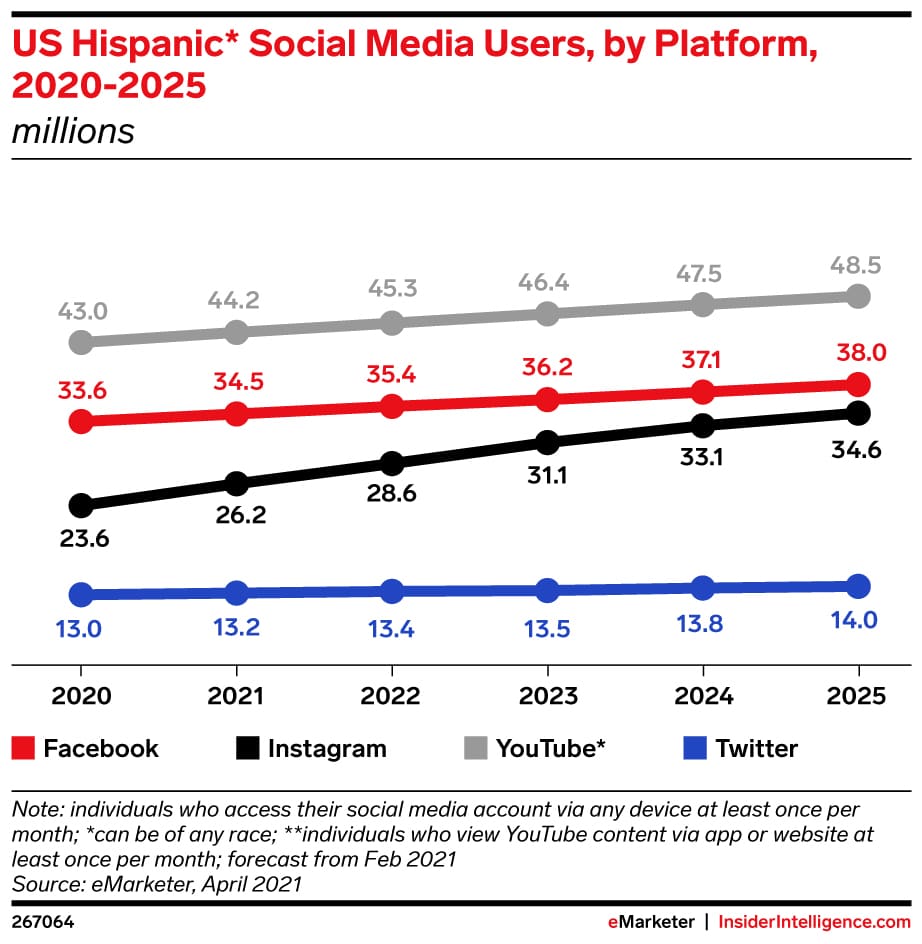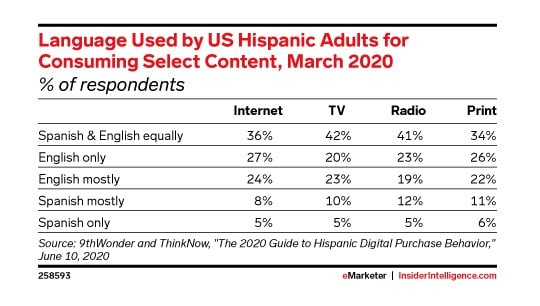With 63.5 million Hispanics in the U.S., they are target audiences for many brands that are often stereotyped or mischaracterized. Incredibly diverse, Hispanic audiences are digital-savvy, mobile-friendly, and avid social media users, but that doesn’t mean they are all the same. Advertisers must think beyond just translating ads into Spanish to authentically reach Hispanic audiences and convert Hispanic prospects.
The term “Hispanic” is an ethnicity that refers to many different peoples, cultures, and countries of origin — it’s not one monolithic culture or race. Commonly applied to people with a cultural and historical link to Spain, this includes Latin America, the Philippines, and even Equatorial Guinea. Additionally, there are many more differences such as generational behavior that impacts favorite content platforms, language preference, and more.
U.S. Hispanic audiences are diverse.
While U.S. Hispanic consumers are critical audiences for brands, many advertisers treat them monolithically, resulting in missed opportunities and misunderstandings. One way that advertising to U.S. Hispanics can lack authenticity is through translations. There are many nuances to Spanish translation that play a role in your advertising.
One example within the auto industry is for the word “car.” While Spanish advertising may certainly use “auto” for “car”, you might increase your CTR in certain locations by opting for “coche”, “automóvil”, “vehículo”, “coche”, or “carro”. All of these words are synonyms but have a higher likelihood of being recognized by Spanish speakers of specific regions or countries.
Another example is “guagua” which translates to “bus” — a word used in the Caribbean and even Spain — while other Spanish-speaking countries may favor “autobús.” Understanding and implementing the right vocabulary is critical to building brand trust and successful advertising to Hispanics across the U.S.
U.S. Hispanic audiences know digital and social.
At least 75% of U.S. Hispanics are digital buyers.
U.S. Hispanic consumers are more likely than U.S. non-Hispanics to:
- Like to follow their favorite brands or companies on social sharing/networking websites
- More likely to purchase products they see advertised on a social sharing/networking website
- More likely to purchase products they see used or recommended by friends on social sharing/networking websites
- Pay attention to ratings and reviews posted online by other consumers
U.S. Hispanics use more social media networks than the total U.S. population, most notably on WhatsApp, Instagram, and Twitter.
- ~49 million US Hispanics view at least one YouTube content at least once per month
- ~38 million US Hispanics access Facebook at least once per month
- ~35 million US Hispanics access Instagram at least once per month
- ~14 million US Hispanics access Twitter at least once per month

Here’s how to improve your advertising to U.S. Hispanic audiences.
1. Be mobile-friendly.
Averaging four hours per day for app and web smartphone usage, Hispanics use their mobile device more than the average for the whole U.S. adult population.
–eMarketer
With smartphones as the device of choice, advertisers need to prioritize mobile design and mobile user experience.
2. Ensure diverse representation in your advertising.
53% of adult Hispanics feel their ethnicity is being portrayed stereotypically in advertisements.
– eMarketer
Avoid stereotyping within advertising by only using one monolithic Hispanic identity, lifestyle, type of music, etc.
3. Guarantee your ads represent Hispanic cultural values.
79% take pride in their Hispanic heritage and traditions, and 77% say it’s important to keep their Hispanic Heritage a part of their lives.
– eMarketer
Advertising should represent what’s important to specific Hispanic holidays and celebrations, which vary by country of origin but center on family, faith, food, and much more.
4. Understand and utilize many Hispanic dialects and terms.
When translating advertising into Spanish, remember that a word can have a totally different meaning depending on the country and region. Understanding these nuances and then incorporating the correct slang and idioms, when appropriate, makes sure that your advertising will resonate with the right Hispanic audience.
5. Account for generational differences.
There are great differences in content between older and young generations, Gen Z and Millennials, who are more likely to engage with Spanglish content than older generations. Older and more traditional generations prefer content that mirrors their country of origin.
For publishers, younger generations are heavy video content consumers. They will be more active on platforms such as TikTok and Snapchat, whereas older generations are more likely to spend their social media time on Facebook or WhatsApp.

6. Be aware and informed about U.S. Hispanic current events and lived experiences.
Advertisers need to understand how the COVID-19 pandemic, hurricanes, and other factors affect Hispanics worldwide. This understanding enables advertisers to better serve these audiences. For example, a negative event within the U.S. doesn’t impact communities equally. Often Hispanic communities are impacted more negatively and to a greater extent than some others. For example, the COVID-19 pandemic has continued to put U.S. disparities on full display. For example, the June 2020 Monthly Labor Review from the U.S. Bureau of Labor Statistics showed that while 44% of total U.S. workers were able to telework, only 29% of Hispanic workers were able to do so. U.S. Hispanic purchasing power has and continues to be affected by the pandemic and your advertising needs to be informed and thoughtful about these impacts. Additionally, social listening even outside of the U.S. plays a key role in effective advertising as many U.S. Hispanics still have family in their country of origin. Adding an extra layer of awareness of events and changes outside of just the U.S. is impactful and a big plus.
Next Steps for Advertisers
U.S. Hispanic audiences are incredibly diverse with many cultures, traditions, language preferences, and much more. To effectively reach your specific target audience, advertisers need to think beyond just Spanish translation and make sure messaging speaks to the uniqueness of the people you’d like to reach.
Advertisers need to treat Hispanic audiences with the same respect and care as any other by ensuring that all assets are correctly translated and adapted to their experience. Be ready to answer any questions and have a plan before launching a campaign on how you will moderate comments on your social ads and engage with users. Advertisers should be able to answer questions and continue building brand-consumer connections that last. While Hispanic audiences are often lumped together in one monoculture, they are far from it. Hispanics in the U.S. are incredibly diverse and digitally savvy, making them a critical target audience for any brand.
Stay up-to-date and learn even more paid media insights. Read What to Expect from Facebook’s Targeting and Audience Ad Updates: September 21.





